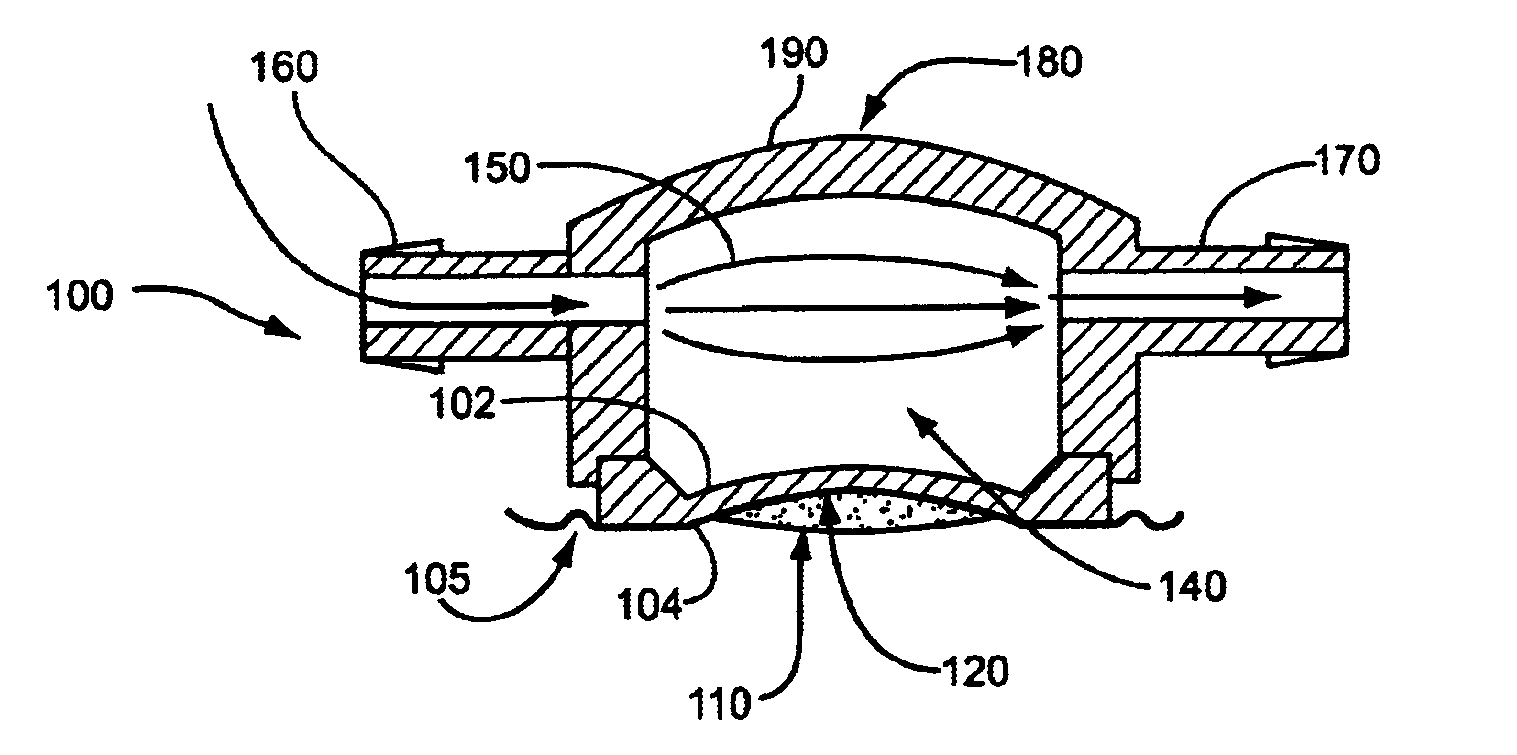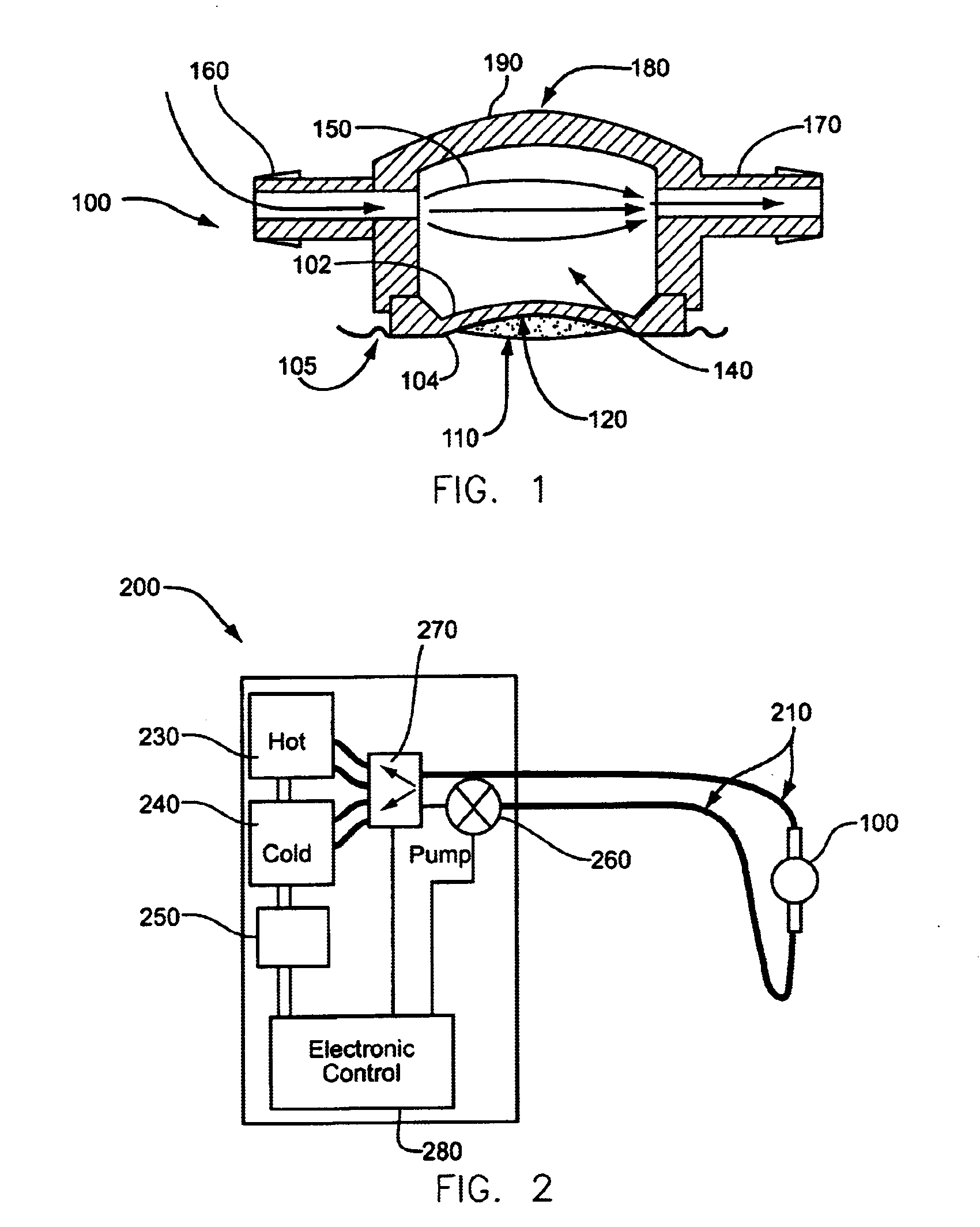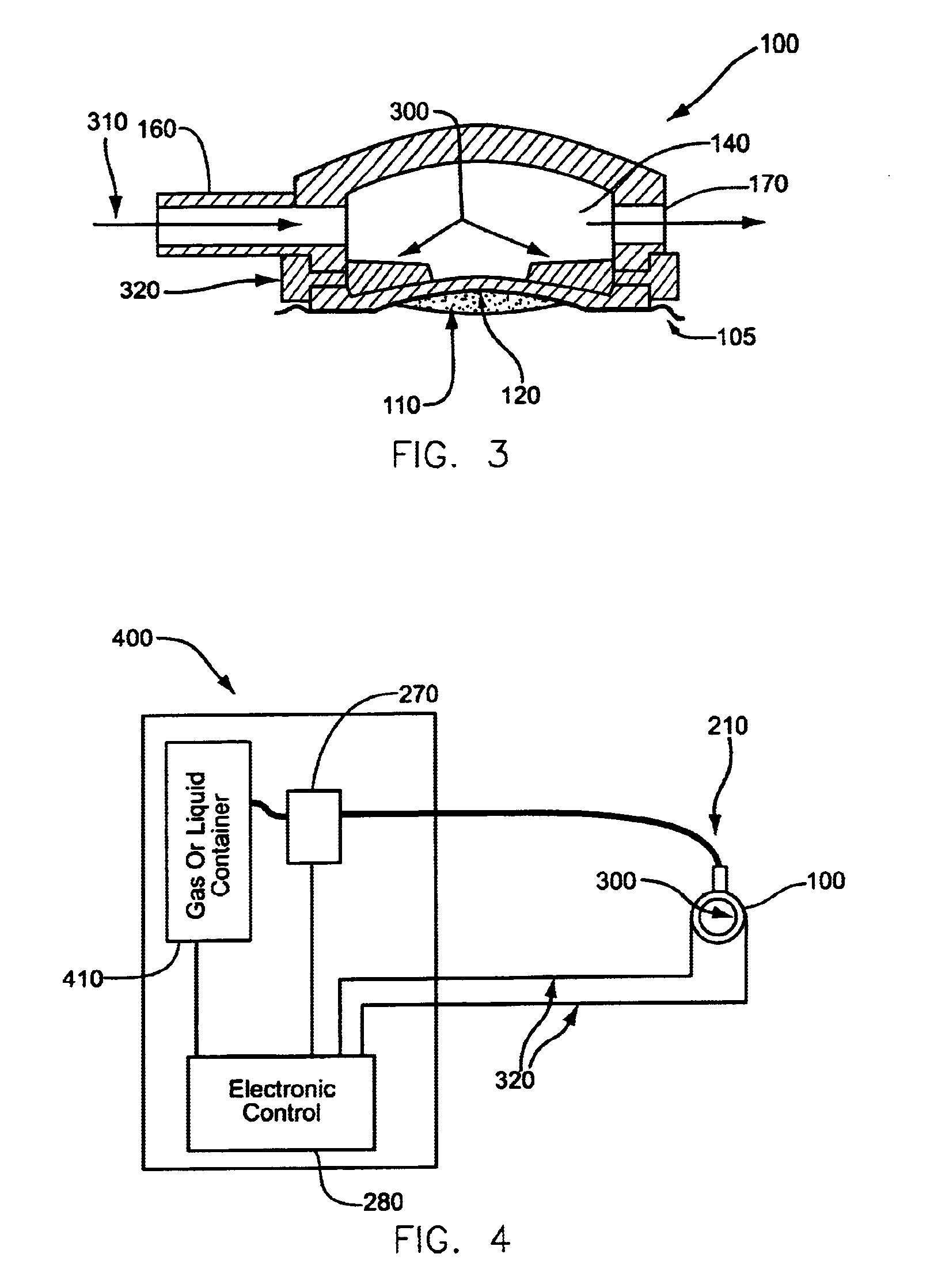Device for the shaping of a substance on the surface of a cornea
a technology of a device and a cornea is applied in the field of devices for the shaping of a substance on the surface of a cornea, which can solve the problems of not being able to predict the final shape of the corneal surface, the module is remote from the eye, and the refractive irregularities are only simple and predefined, so as to achieve the effect of convenient removal and easy removal
- Summary
- Abstract
- Description
- Claims
- Application Information
AI Technical Summary
Benefits of technology
Problems solved by technology
Method used
Image
Examples
example 2
MATERIALIZATION EXAMPLE 2
To form a modulator with the help of the mold, when the patient observes a light source, a mark is made on the cornea at the point behind which the reflection of the light source can be seen. The mold includes a membrane from polyethylene on the concave molding surface. The membrane includes a coated quantity of thermoreversible fluorescent hydrogel in a rigid form. Water of a high temperature is circulated inside the cavity of the mold for several minutes and the coated rigid hydrogel is liquefied.
Thereafter, water of a temperature of about 45.degree. C. continues circulating in the cavity of the mold to keep the hydrogel in liquid form until the time of application. While the patient observes the light source through the mold, the mold is placed centrally with the help of the mark that the mold bears on its convex surface. Also, the mold is rotated so that the image of the light source that is formed from the convex surface of the mold coincides with the m...
example 3
MATERIALIZATION EXAMPLE 3
The cavity of the molding lens 100 includes heating elements 300, 500, e.g. electric resistive elements. On the external surface of the mold there are junctions through which the electric current enters the heating elements 300, 500. The mold is heated up when electric current is switched on. To cool the molding lens 100 and substance located on the molding lens, such as hydrogel, a low temperature liquid or gas, for example liquid nitrogen or CO.sub.2, may be inserted through this socket in the cavity.
To form the modulator with the help of this mold, when the patient observes a light source, a mark is made on the cornea at the point behind which the reflection of the light source can be seen. The mold includes a membrane of polyethylene located on the concave molding surface. On the membrane there is coated a quantity of thermoreversible fluorescent hydrogel in rigid form. A current is supplied in the heating elements 300, 500 in the mold for a time needed ...
PUM
| Property | Measurement | Unit |
|---|---|---|
| temperature | aaaaa | aaaaa |
| temperature | aaaaa | aaaaa |
| diameter | aaaaa | aaaaa |
Abstract
Description
Claims
Application Information
 Login to View More
Login to View More - R&D
- Intellectual Property
- Life Sciences
- Materials
- Tech Scout
- Unparalleled Data Quality
- Higher Quality Content
- 60% Fewer Hallucinations
Browse by: Latest US Patents, China's latest patents, Technical Efficacy Thesaurus, Application Domain, Technology Topic, Popular Technical Reports.
© 2025 PatSnap. All rights reserved.Legal|Privacy policy|Modern Slavery Act Transparency Statement|Sitemap|About US| Contact US: help@patsnap.com



